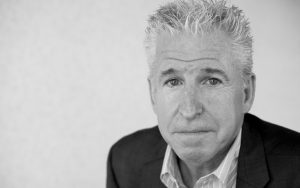We know we are going to fail. That’s the price you pay when health care is your calling. Despite all of our efforts, there will be many we can’t save. Bodies will break down and nature will eventually win.
And in these efforts we will make mistakes—despite our best intentions.
We shield ourselves against this often unspoken truth with an indomitable determination to do “everything in our power” to help stem the tide of inevitability.
We do everything in our power to extend life. We do everything in our power to beat pain and ease suffering.
As health care marketers, “everything in our power” means bringing our creativity and insights to help people find the remedies they need.
These are the tools we bring to the everyday fight in health care—but these tools are even more important when we face a health crisis.
Like obesity and AIDS, we have a crisis on our hands in the opioid epidemic. And this time, as health care marketers, our kind bears some responsibility for this crisis. In our efforts to do everything in our power to ease our patients’ pain, we have unleashed a seemingly insatiable monster that is gobbling up lives in a manner like no other crisis we have ever seen before.

Bob Brandt talks to recovery patients about losing his grandson Robby to heroin. The sign behind him tracks overdose deaths in Cleveland’s Cuyahoga County. The next day I passed the sign, the number read 433. Photo by Chad Hunt.
But how did we get here?
From the moment its molecules were separated from opium in the early 1800’s, morphine has both saved and destroyed lives. Perhaps unfairly, morphine and its many opioid cousins have contributed an immeasurable amount of good to medical science—but its deadly side is much more measurable in terms of lives lost.
While people were dying from opium and morphine for hundreds of years before and since 1804 (its first mention is 3400 B.C.), the roots of today’s opioid crisis were planted a few decades ago.
Those roots of today’s opioid crisis began within the creative department of an advertising agency.
In 1951, an enterprising man by the name of Arthur Sackler began the revolutionary methods of drug advertising that we know today. He was promoting a new strain of antibiotics, and this time he was marketing straight to doctors. This new antibiotic went gangbusters. Within a few short years, nearly everyone was prescribing it.
Parlaying that methodology less than ten years later, Sackler’s agency made Valium the industry’s first billion-dollar drug. Targeting stressed, bored and depressed housewives in the 1960’s, Valium became the catch-all drug of the decade. The campaign was so successful, Sackler took his profits and bought the advertising firm he worked for and then purchased part of Perdue Fredrick, a pharmaceutical manufacturer who, at the time, specialized in more benign products. But with the know-how to reach physicians directly, the table was set to take advertising medicine to a whole new level of cultural reach.
The next time you see one of those long pharmaceutical ads with a lady smelling flowers in a field of rolling hills or sitting in twin bathtubs with her partner—you are seeing the legacy of Arthur Sackler.
But like all legacies, there’s more to the story, and others would have a role to play.
A Crisis is Born
Sackler’s inadvertent contribution to the opioid crisis was just one part of the puzzle. By the late 1970’s and early 80’s, the medical community was yearning to find better solutions to treat pain. It became such a focus that pain was labeled the “Fifth Vital Sign” by the American Medical Association. (Interesting side note: in response to the opioid crisis, the AMA removed this designation last year).
As we rolled into the 1990’s, physicians were feeling the pressure to treat pain. Pressure from themselves to upkeep their oaths. Competitive pressures to offer the same or better solutions than other physicians. Pressure from patients and their families. And ultimately they felt pressure from their peers to do everything in their power to defeat pain.
By 1996, when Sackler’s pharmaceutical firm Perdue launched time-released opioids, that perfect storm of demand and advertising began taking hold. In a few short years, OxyContin would be the king of all drugs and later, that little pill would make a handful of Mexicans and Americans major drug kingpins.
A cocktail of greed and good intentions
Since their first use, the vast majority of physicians were acutely aware of the risks of addiction when it comes to painkillers. But they were told these new drugs were different. Drug companies came armed with new research showing less habit-forming statistics. These companies also came armed with sales reps who had vast dining and entertainment budgets.
Opioids were very effective at treating pain. A valiant need was being met. We were finally doing everything in our power to beat pain. So in retrospect, the history of this crisis is actually a strange cocktail of greed and best intentions.
But that cocktail has created a world that Sackler and the medical community never intended to create.
With such a prevalence of opioids flooding our communities, nature’s inevitability means that about 20 percent of people are predisposed to become addicted to opioids. The cost of these drugs and irresistible symptoms of withdraw causes these addicts to turn to heroin. The potency of the street drug mixed with unregulated toxins means that these people are playing a very deadly game of roulette every time they use. Mexican cartels saw the demand for a lower price alternative to prescription painkillers and filled the void with a massive influx of street heroin.
And these aren’t street junkies with no future. I have interviewed addicts with Master’s degrees who simply had a surgical procedure and then couldn’t shake the pills. Even years into their struggle, they still tell me they wake up every day and can’t believe they are heroin addicts.
Sydney is one of many recovery patients we have featured in our work against addiction. She’s a middle class, all-American young woman just fighting to break the chains of this disease. Photo by Chad Hunt.
The Path to Redemption
Last year, Tennessee wrote more opioid prescriptions than there are people in the entire state. Thousands more people died of overdose than the worst year of deaths in the AIDS crisis, prompting the Surgeon General of the United States to proclaim that addiction is a bigger health threat to our nation than cancer.
While most of your community doesn’t know the historical details cited above, they know the medical and advertising industries hold significant responsibility for this crisis.
To the layman, too many MDs have become drug dealers with lab coats. And those lab coats have your logo on it.
Is it fair? Who is to say? Our ancestors and colleagues within our industries of medicine and advertising did what they did in the spirit of doing “everything in our power” to help—even Arthur Sackler, I hope.

Greg McNeil lost his son Sam to heroin in 2015. Ever since, Greg has been a tireless adovcate in the fight against addiction. His organization Cover2 often explores alternative pain treatments to limit the prescription of opioids. Photo by Chad Hunt.
We can’t change the past. But as healthcare marketers, we stand on the precipice of redeeming our collective industries. We can give more meaning to our professional souls.
Your community needs your help in this crisis. We need your skills. The reach and scale of the opioid epidemic will call you into action at some level to fight it. Medical advertising may have influenced this epidemic, but one thing we know as healthcare marketers is that art can defend life. We do it every day in service lines like cancer and cardiac care.

At 13 years-old, Hannah’s mother forced her to start dealing drugs. Today, Hannah is herself a mother but she is now sober thanks to her area health system, St. Vincent Charity Medical Center. Photo by Chad Hunt.
Whatever role your organization might play in beating the opioid epidemic, I hope you see this as more than a project. Addiction treatment is not a loss leader. It’s not another meeting on your calendar.
It’s a chance at redemption. It’s a chance at redemption for our craft. We can redeem our colleagues by our side and those who came before us. But most of all, it’s a chance to help aid in the redemption of your community and an entire nation. Not to mention, it’s the chance to redeem the loyalty of an entire grateful community. This is how brands can make a real difference.
When you get a chance to take your shot at this epidemic, do everything in your power to make it right again.
Franklin Street was honored to be asked to take our own shot at this crisis to help raise funds for a treatment center in downtown Cleveland. Watch our intro video below and visit the full site here.
Authors Note: Much of the source material for this blog came from the book “Dream Land: The True Tale of America’s Opiate Epidemic” by Sam Quinones. It is the definitive account of the origins of the crisis.


